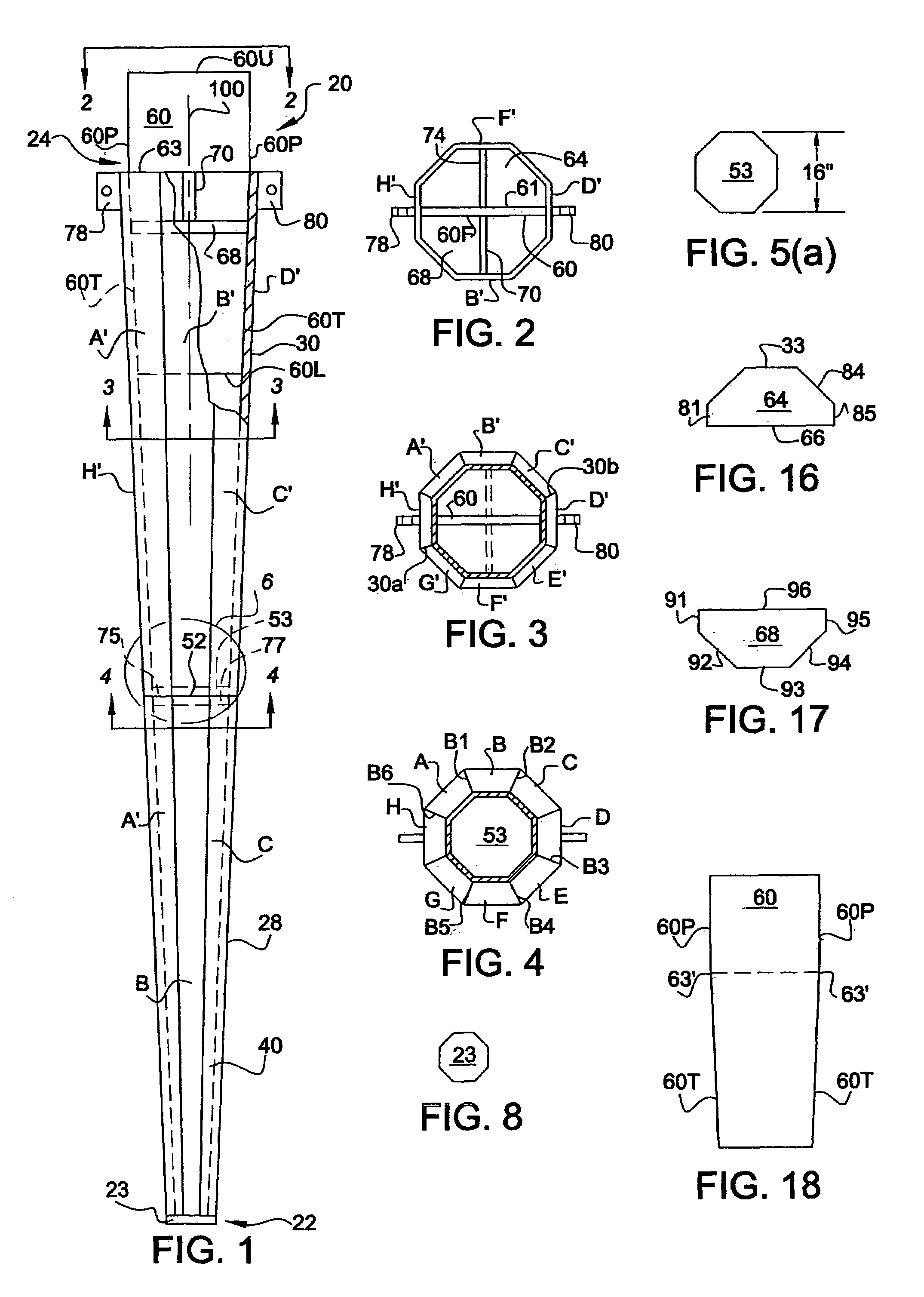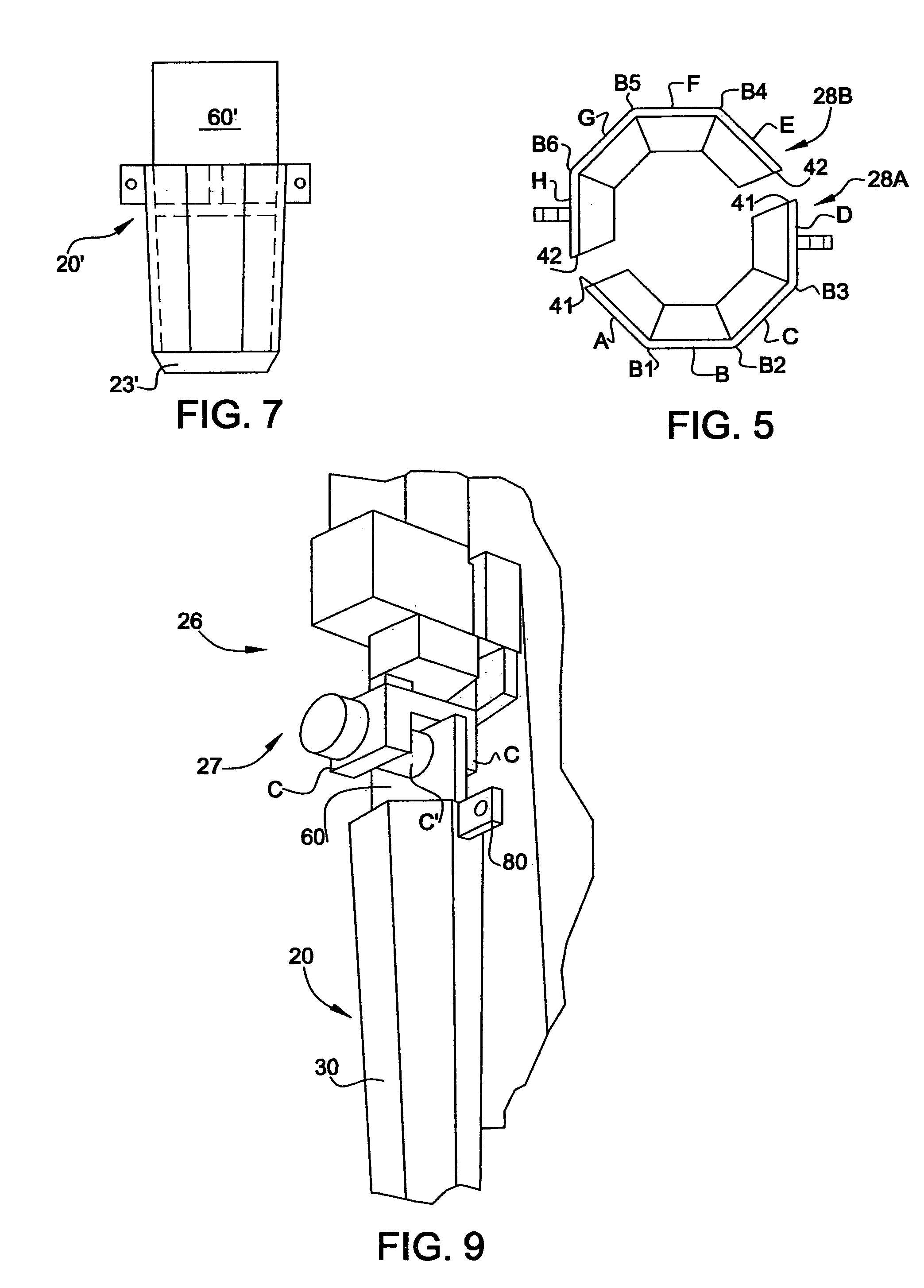Apparatus for providing a rammed aggregate pier
a technology of aggregate piers and rammed piers, which is applied in the direction of foundation engineering, construction, caissons, etc., can solve the problems of reducing the possibility of subsequent loss of structural integrity of cavities, and achieve the effect of reducing the propensity for bulging
- Summary
- Abstract
- Description
- Claims
- Application Information
AI Technical Summary
Benefits of technology
Problems solved by technology
Method used
Image
Examples
Embodiment Construction
[0083]In describing preferred embodiments of the present invention as illustrated in the drawings, specific terminology is employed for the sake of clarity. However, the invention is not intended to be limited to the specific terminology so selected, and it is to be understood that each specific element includes all technical equivalents that operate in a similar manner to accomplish a similar purpose. It should also be understood that the directional and positional descriptions such as above, below, front, rear, upper, lower and the like are based upon the relative positions of the structural components illustrated in FIGS. 1, 2 and 3.
[0084]The present invention achieves the foregoing objects in a preferred embodiment by employment of a unique primary ground penetrating downwardly tapered mandrel, generally designated 20 (FIG. 1), which is typically about 10 to about 20 feet long and has a longitudinal axis 100. Primary mandrel 20 is often octagonal in cross-section and continuousl...
PUM
 Login to View More
Login to View More Abstract
Description
Claims
Application Information
 Login to View More
Login to View More - R&D
- Intellectual Property
- Life Sciences
- Materials
- Tech Scout
- Unparalleled Data Quality
- Higher Quality Content
- 60% Fewer Hallucinations
Browse by: Latest US Patents, China's latest patents, Technical Efficacy Thesaurus, Application Domain, Technology Topic, Popular Technical Reports.
© 2025 PatSnap. All rights reserved.Legal|Privacy policy|Modern Slavery Act Transparency Statement|Sitemap|About US| Contact US: help@patsnap.com



